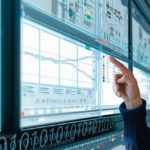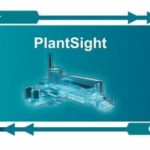Assuming that data really is the new oil of the digitalised world, every owner/operator of process plants would thus possess a source of tremendous potential – today, hardly anything is easier than producing data. Surely you already realise that it is obviously not that simple and that the oil comparison is misleading. So the 2006 quote was extended to „Data is the new oil. It’s valuable, but if
unrefined it cannot really be used. It has to be changed into gas, plastic, chemicals, etc. to create a valuable entity that drives profitable activity; so must data be broken down, analysed for it to have value.“ This makes the comparison more precise. While oil must be explored, drilled and processed in order to be sold as fuel or as a chemical feedstock, data must also be refined in order to use it profitably. What might this look like in real terms?
Data is ubiquitous and often unused
Measured values, messages, alarms, real time or maintenance data – in plant operation, masses of data are produced. And terabytes of data are already generated before commissioning, from process planning, hardware project planning, possibly from simulations, process models, etc. All this information is important – not only
for the work of individual trades, but also for the productivity and safety of the entire plant. Now, however, this data is distributed across countless systems, software applications, databases and, as before, over innumerable spatial meters of files in the archive. Today’s software systems are often specialised for a particular type of task, but often still lack the connectivity that would allow easy comparison or cross-referencing of asset information. One of the reasons for the absence of connectivity is the lack of support to keep systems synchronised. In addition, the tools used often require high demands on skills, licensing costs, computing and network resources. So, finally, operators are confronted with countless formats and data that is often outdated, inaccurate, difficult to access and poorly synchronised – which is why they are called ‚dark data‘.
Modern dream child: the digital twin
But if all data is collected, consolidated, contextualised and standardised, the virtual image of reality emerges: the digital twin of the plant or production. It allows the entire plant lifecycle to be depicted and optimised – for both greenfield and brownfield plants or projects. However, the digital twin must always be kept up to date. Plantsight from Siemens is a solution that scores in all required disciplines with the right tools and services. The system provides the technological basis for the complete digital twin, which is continuously updated, truly replicates its physical counterpart in both behaviour and information context, and provides users with the information required for the subsequent steps. This provides site managers, operators, engineers and/or plant managers with reliable and up-to-date information about plant operation. This dynamic image, which is created from data from process and plant technology, plant design, design and engineering steps as well as maintenance measures, is particularly important for the process industry, as the plants here are characterised by permanent modifications.
Holistic approach to value creation from data
Easily and securely accessible via a browser, the Plantsight cloud-based solution facilitates the digital twin by aggregating data from many sources. These sources can include engineering or maintenance databases, stored 3-D models, 3-D measurements and photogrammetric information, as well as data from enterprise resource planning (ERP) systems, recipe databases, project and portfolio management systems or laboratory information management systems. This is made possible by functionalities in the form of micro services and connectors. This approach of distributed data management (where data sets are intelligently connected to each other) avoids replication while providing consistency and accessibility. Such functionalities can significantly reduce the effort to build the digital twin and increase the percentage of documented inventory information. The time and energy required to merge and complete asset information – especially for existing plants – is enormously reduced by the use of artificial intelligence; static and dynamic asset information can be merged automatically.
Trusted data for better decisions
Services for validating and linking data to other information, combined with change tracking, improve the accuracy, completeness, and also the reliability of asset data and documentation, enabling better and faster decisions. Whether plant or site managers, plant designers or operators, all benefit equally from reliable and up-to-date data and information. Context is critical to understand the meaning of data and responding to it appropriately in daily operations. When, as with Plantsight, data is automatically contextualised, added and updated on a daily basis, this results in a higher level of information documentation and makes the data all the more trustworthy. The Siemens solution presents all information role-based in the Plantsight Web Portal and all involved parties can rely on AI-supported proposals for action in their daily decision-making. To make long-term success measurable, integrated technologies ensure that the quality and completeness of plant information is constantly monitored and that changes in plant performance in terms of plant characteristics or plant modifications are comparable.
In Plantsight, real and virtual worlds can be brought into harmony through an all-encompassing digital twin platform. This platform can be used to determine capacity utilisation and effectiveness data, and to enable well-founded decision-making in the simulation of the virtual plant by means of integrated artificial intelligence and machine learning technologies – for more efficient production lifecycles and thus for more growth. So, is data the new oil? In contrast to oil, data is the bigger challenge. To transform it into valuable insights, a great deal of experience in handling data, analysing and contextualising it is necessary. Equating data with oil neglects this complicated reality. The biggest difference, however, is that both the supply of oil and its applications are finite. With data, the opposite is true, as long as there are people, we will continue to generate more and more data, and we are now only at the beginning of countless data application possibilities.
Siemens AG, Nuremberg, Germany











